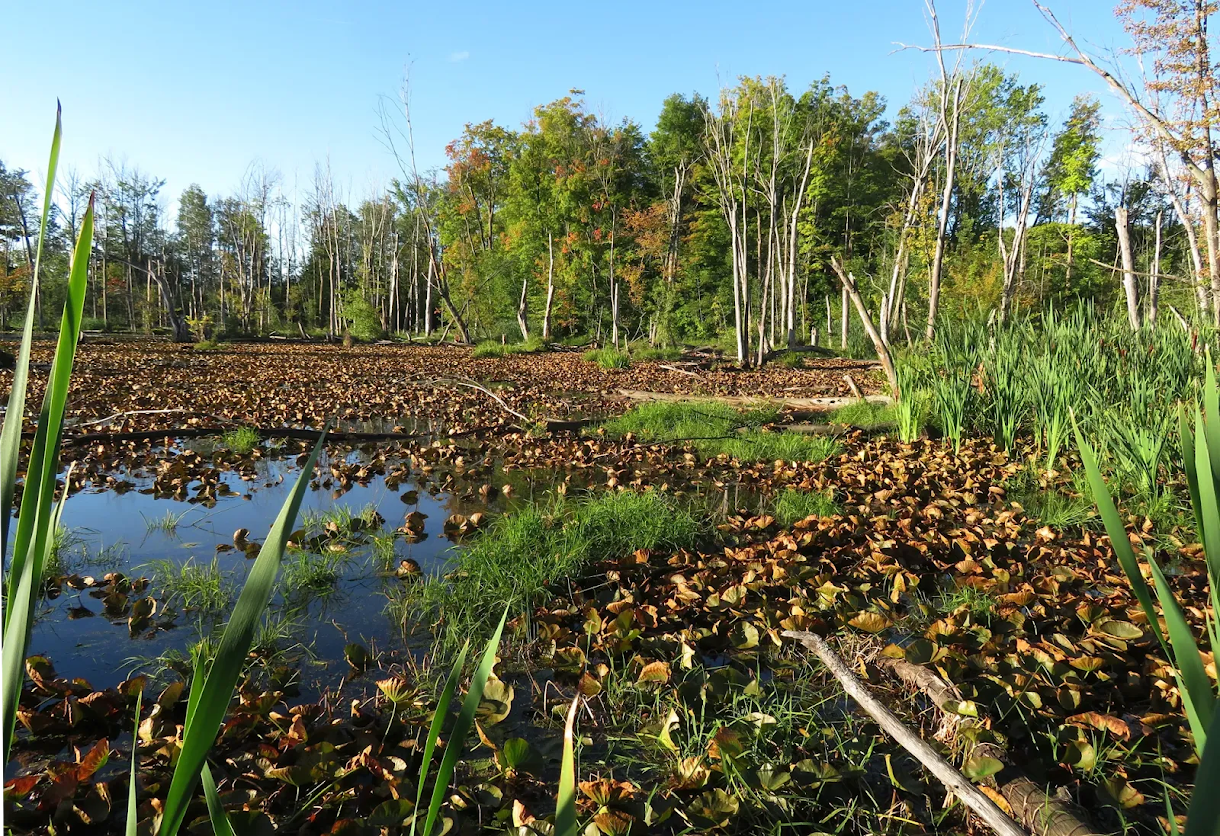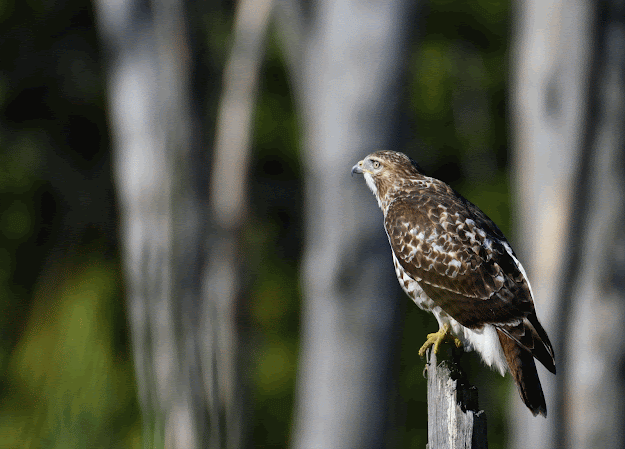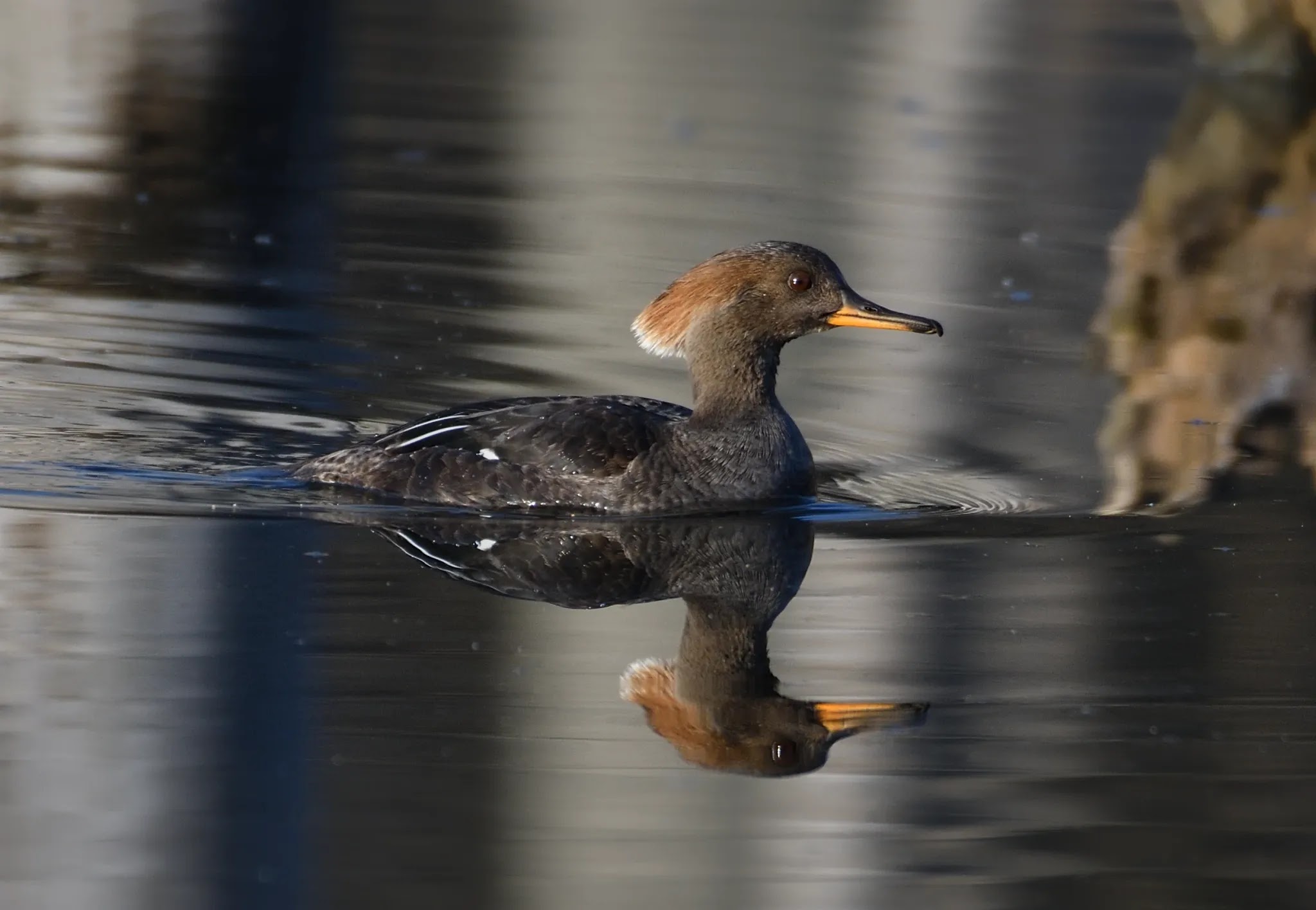Predators of the Wetlands
A primordial soup filled with twisting limbs and rotting carcasses, a mosquito-infested swampland more likened to the time of the dinosaurs than modern-day Kitchener and only a few minutes away from my home. What could be more inviting!
The carcasses that I am referring to are of course the rotting tree trunks that still stand in the waterlogged ground, compelled to reach skyward until their demise. The Wetlands are far from dead though, they are brimming with life, which attracts me and also predators.
And what were the red-tailed hawks pursuing? Just about anything that was moving. They even dived at a group of mallards that were dabbling in the water.
From young blue jays.
To eastern kingbirds.
To great-crested flycatchers.
To a family of cedar waxwings.
Then a group of solitary sandpipers.
And finally, to their favourite target of all, the northern flickers, of which there were many dotted around the open expanse of the wetlands.
I did not observe the hawks with a catch, although they did come close with a solitary sandpiper before they moved off into the tall stands of trees that edge the water.
Red-tailed hawks are not the only birds of prey to visit the wetlands though. There are also scavengers and falcons.
















Comments
Post a Comment